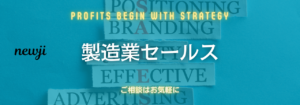- お役立ち記事
- Development and application development of ultra-lightweight fibers utilizing nanoporous structure

Development and application development of ultra-lightweight fibers utilizing nanoporous structure

目次
Understanding Ultra-Lightweight Fibers
In recent years, the textile industry has experienced a significant transformation thanks to the development of ultra-lightweight fibers utilizing nanoporous structures.
These advanced materials have revolutionized various applications, boasting benefits such as reduced weight, enhanced durability, and improved performance.
Understanding the science behind ultra-lightweight fibers can significantly help us appreciate their potential applications.
What Are Nanoporous Structures?
Nanoporous structures refer to a material’s structural feature containing a network of pores with nanometer-sized diameters.
In essence, these are tiny holes or voids within a material, which can considerably influence its physical and chemical properties.
The presence of nanopores reduces the density of a fiber without compromising its strength or flexibility.
This structural innovation allows the development of fibers that are incredibly light yet durable.
How Ultra-Lightweight Fibers Are Made
The production of ultra-lightweight fibers with nanoporous structures involves advanced nanotechnology techniques.
Typically, the process begins with the selection of a suitable base material, which is then treated to introduce nanopores.
Methods such as electrospinning, etching, and chemical vapor deposition are commonly used to create these porous structures.
Each technique can be tailored to control the size, distribution, and orientation of nanopores within the fiber, enabling customization for specific applications.
Applications of Ultra-Lightweight Fibers
The unique properties of ultra-lightweight fibers have paved the way for a multitude of applications across different industries.
Textile Industry
In the textile industry, ultra-lightweight fibers are being used to produce clothing that is not only lightweight but also breathable and comfortable.
These fibers offer excellent moisture-wicking capabilities, making them ideal for sportswear and outdoor apparel.
Moreover, they provide insulation properties, making them suitable for both hot and cold weather conditions.
Aerospace and Automotive Industries
In aerospace and automotive sectors, every gram counts.
The introduction of ultra-lightweight fibers contributes to significant weight reductions in various components such as seats, interiors, and panels.
This reduction in weight results in improved fuel efficiency and lower emissions, adhering to increasingly stringent environmental standards.
Medical Applications
The medical field has also greatly benefited from these fibers.
Their lightweight nature makes them suitable for developing medical implants and prosthetics that are more comfortable for patients.
Additionally, their biocompatibility and ability to be woven into delicate structures make them ideal for various medical textiles.
Environmental Applications
From an environmental perspective, ultra-lightweight fibers with nanoporous structures are being explored for applications such as filtration systems and environmental sensors.
Their high surface area and customizable pore structures enhance filter efficiency, making them effective in trapping pollutants and other airborne particles.
This makes these fibers valuable for air and water purification technologies.
Future Prospects and Challenges
The future of ultra-lightweight fibers looks promising, with ongoing research aimed at expanding their applications and enhancing their performance.
Innovations and Research
Researchers are continually exploring new materials and techniques to improve the efficiency and scalability of fiber production.
Innovative approaches such as hybrid nanoporous structures and enhanced material properties could further refine their capabilities, paving the way for more breakthroughs in applications.
Challenges Ahead
Despite these promising developments, several challenges still exist.
For one, the cost of production remains a significant hurdle that needs to be addressed to make these fibers widely accessible.
Scaling up manufacturing processes while maintaining quality and consistency poses another obstacle.
Additionally, environmental concerns regarding the lifecycle and biodegradability of these advanced materials require attention.
Sustainable practices must be adopted in their production and disposal to minimize ecological impact.
Conclusion
The development and application of ultra-lightweight fibers utilizing nanoporous structures represent a leap forward in material science.
Their manifold benefits span across numerous industries, promising exciting advancements in technology and sustainability.
As research continues to overcome existing challenges, the potential for these fibers to transform industries is immense.
For now, they remain a shining example of how innovation in material science can lead to practical solutions with far-reaching impact.
 資料ダウンロード
資料ダウンロード
QCD管理受発注クラウド「newji」は、受発注部門で必要なQCD管理全てを備えた、現場特化型兼クラウド型の今世紀最高の受発注管理システムとなります。
 NEWJI DX
NEWJI DX
製造業に特化したデジタルトランスフォーメーション(DX)の実現を目指す請負開発型のコンサルティングサービスです。AI、iPaaS、および先端の技術を駆使して、製造プロセスの効率化、業務効率化、チームワーク強化、コスト削減、品質向上を実現します。このサービスは、製造業の課題を深く理解し、それに対する最適なデジタルソリューションを提供することで、企業が持続的な成長とイノベーションを達成できるようサポートします。
 製造業ニュース解説
製造業ニュース解説
製造業、主に購買・調達部門にお勤めの方々に向けた情報を配信しております。
新任の方やベテランの方、管理職を対象とした幅広いコンテンツをご用意しております。
 お問い合わせ
お問い合わせ
コストダウンが利益に直結する術だと理解していても、なかなか前に進めることができない状況。そんな時は、newjiのコストダウン自動化機能で大きく利益貢献しよう!
(β版非公開)




